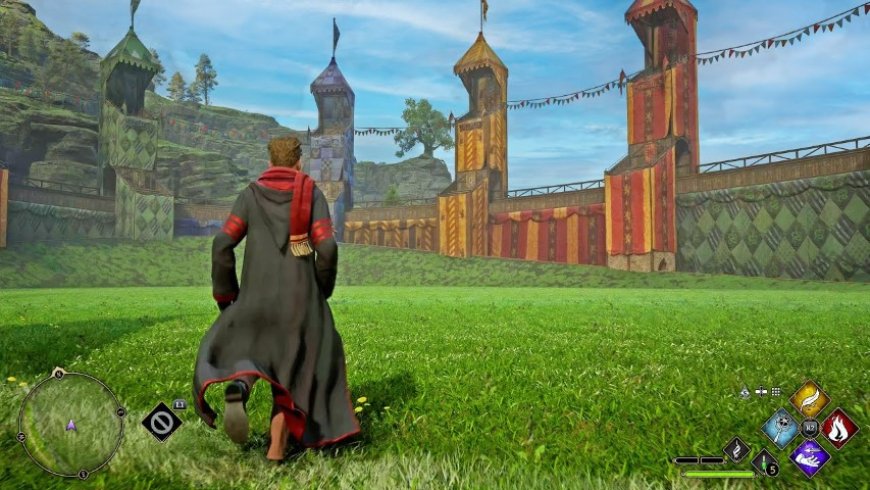Hogwarts Legacy Secrets You Should Know Earlier
Hogwarts Legacy secrets and tips you should know from early game for better experience
Earlier today, Hogwarts Legacy was released worldwide, at least for those who picked up the deluxe edition of the game. In this article, we aim to help you become better at it by showing you some of the features that the game doesn't really tell you about. This includes hidden features or ones that aren't well documented or explained. We're going to give you a bunch of day-one tips and tricks for Hogwarts Legacy.
One of the most notable design choices in the game is that you need to buy things. Crafting is a core component of the game, and early on, you'll attend several classes that give you an introduction to how crafting works for potions and plants. However, to dive deeper into this, you'll need to spend money to unlock a ton of things. For example, just to buy your first broom will cost around 600 galleons, which is fairly expensive. Things only get more expensive once you get into the room of requirement.
So, one takeaway is that you're going to need money to progress in Hogwarts Legacy. This is not one of those games where you can build everything yourself if you want to save money. You have to buy things and use the vendors. But how do you actually make money? There are two major ways to do this, especially in the early game. These include selling your gear and finding disillusionment chest.
Disillusionment chest are a big source of in-game currency. You can find these chests all over the game, with a nice concentration located in Hogsmeade. To open these chests, you have to be invisible, so simply use your invisibility spell, which you'll get very early on in the game as part of the main story. When you sneak up to one of these chests, you'll immediately get 500 galleons, which is a huge boost. If you just run around Hogsmeade and do this, you can actually get several thousand galleons really quickly.
Although you may be tempted to immediately run to one of the clothing vendors to upgrade all of your gear, you probably shouldn't do that, at least not yet. Save up your money for your broom and other things in the room of requirement.
There are two main ways to make money in Hogwarts Legacy: selling gear and looting gear. When you find new gear in the game, you should compare its stats to your current equipment. If it has better stats, equip it, but if not, it is better to sell it to a vendor. The game has a transmog system, where you can change the appearance of your gear without affecting its stats. You can access this system by highlighting a piece of gear in your inventory. You can also change the appearance of all your gear to the dark arts pack from the main menu.
In the game, there are four tiers of gear: green, blue, purple, and orange (legendary). The offensive stats are the most important in the early part of the game, but later on, you can assign traits to your gear. Blue gear can have tier one traits, purple can have tier two traits, and legendary gear can have tier three traits, which are the best. To make more money, you should loot the eye chests scattered throughout the map, but be careful as you have to sneak up to them.
To increase your inventory space, you can complete Merlin puzzles. These puzzles are scattered throughout the map and you can access them after a few hours in the game when you do a quest with Natsai Onai. As you complete more puzzles, you'll gain more inventory slots, making it a good idea to do this early on in the game. Lastly, adjusting some of the game's settings can also pay dividends across the entire game.
The default camera sensitivity options in Hogwarts Legacy can be improved by turning camera acceleration all the way down and increasing camera sensitivity. This change will give players more control over camera movement and make it more fluid, especially in combat situations. Another setting to consider turning off is camera relative targeting, which will allow players to target enemies using the joystick instead of having to look at them. This makes combat feel more fluid and allows players to switch between enemies more easily.
It is recommended to play around with these settings as they can make a big difference in the game. Players should also keep an eye out for owl letters, as they will receive them throughout the game and some quests won't trigger until the letter is opened. When choosing talents in the game, players should be careful as they are not refundable and the player is locked into their choice for the entire playthrough.
The Revalia spell will be used frequently throughout the game, but it reveals more information and has a larger range when used on a broomstick instead of on foot. The top button on the controller (Y or Triangle) can be used to skip dialogue and cutscenes. If players are tired of hearing the NPC's voice, they can tap the button during dialogue to skip their lines.
If you are using a controller, you can switch between the different types of maps you're looking at by using the left and right buttons on the d-pad. This makes it easier to switch between the overall map, the Hogwarts map, or the Hogsmead map, rather than scrolling all the way up to find the one you want. When you zoom all the way out on the world map, you can get a more broad view of the regions, as well as details such as enemy levels and activities. The map even has a weight option, which is handy. Some activities in the game only appear at night, and some creatures only spawn during this time, so waiting until night time can be valuable.
Hogwarts Legacy is an open-world game, but exploring it too early is pointless. You can technically run around and explore Hogwarts fully, and even start to venture outside of Hogwarts, but there isn't much point until you have some character abilities and core spells. The first several hours of the main quests is where you'll get many of these abilities, and the introductory spells will unlock access to other things. So, although you technically have the option to leave Hogwarts early on, you won't be able to complete many of the open-world activities or puzzles until you get the Room of Requirement and your broomstick.
If you're having difficulty with the game, a couple of general tips for combat include maintaining a decent distance between you and enemies, as it seems to take them longer to hit you if you're further away. Establishing early on where you have certain spells, and their colors, is also helpful. Breaking enemy shields requires using a corresponding spell color, so having muscle memory for which spell is on which side becomes really handy. If an enemy has a shield, you can break it at any time by using an Ancient Magic throw. If the game is too difficult, you can turn the difficulty down at any time on the fly. Based on initial testing, it seems that enemies have faster reaction times on the harder difficulty, so difficulty affects more than just damage dealt and received.











